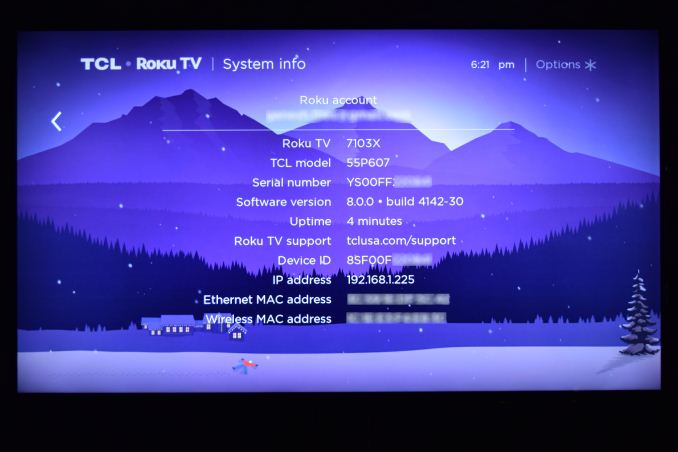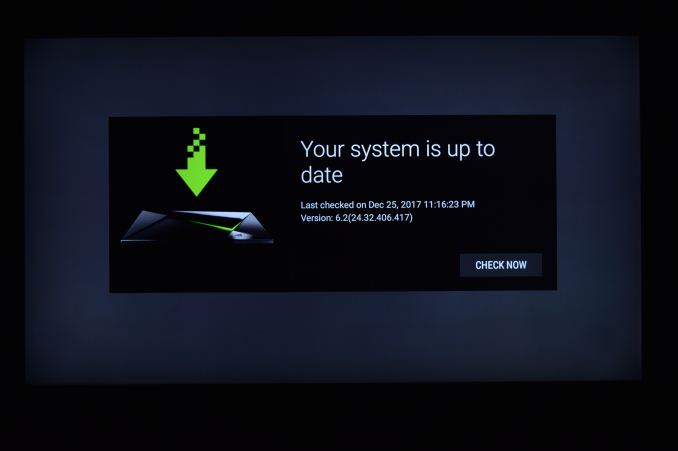A Budget Home Theater & PC Setup: 4K, HDR, UHD Blu-ray, and More
by Ganesh T S on December 26, 2017 8:30 AM ESTEvaluating Display Sources: HTPCs & CE Devices
Home Theater PCs used to be bulky versatile machines that had to support built-in TV tuners, a number of hard disks, as well as optical drives. However, the rising popularity of network TV tuners, network-attached storage (NAS) devices, and OTT streaming have resulted in the a transformation of the functionality that people expect from HTPCs. Simply put, a modern-day HTPC needs to be a flexible and versatile media player capable of handling a multitude of codecs and DRM requirements. The latter is not restricted to the handling of the encoded video. The display output also needs to be secure, while providing enough bandwidth and features to take full advantage of the capabilities of the downstream devices in the setup.
The average consumer often finds the 'it just works' nature of consumer electronic (CE) equipment such as the Roku streamers, game consoles, and standalone Blu-ray players to be attractive. However, for power users, the flexibility of HTPCs (such as the ability to support arcane subtitle formats or specific container features such as MKV chapters, or, even serve as a gaming machine) is simply too much to give up. Certain CE devices such as the NVIDIA SHIELD Android TV STB attempt to offer the best of both worlds. However, they are still closed platforms, and often do not have enough horsepower to fall back upon software decode for unsupported codecs.
Despite my predilection for HTPCs, I wanted to bring out the pros and cons of other closed solutions. Towards this, the evaluation of various options for media playback / display sources addresses the following aspects:
- HDR Support
- OTT Streaming (YouTube and Netflix)
- Local Media Playback (via USB)
- UHD Blu-ray Playback with HDR
The first candidate is the TCL 55P607's built-in Roku platform. Our tests were processed with the TV connected to the network using its wired 10 / 100 Mbps interface and Wi-Fi disabled. Firmware version 8.0.0 4142-30 was used.
The second solution in our evaluation set is one of the most popular Android TV STBs in the market - the NVIDIA SHIELD Android TV (SATV). Despite having launched back in 2015, the combination of high-end hardware and regular firmware updates have kept it at the top of the media player / Android TV STB market. Our tests were processed with the SHEILD connected to the network using its wired 1 Gbps interface and Wi-Fi disabled. Firmware version 6.2 was used.
The use of a RF remote / controller, combined with IP control using a smartphone app, mean that the SHIELD can be safely tucked away out of sight in a home theater setup.
Moving on to the HTPC front, we have three different PCs, with configurations and driver versions listed in the table below.
| Compact Home Theater PC Candidates - 2017 | |||
| PC | Zotac ZBOX MAGNUS EN1080K | ASRock Beebox-S 7200U | Intel NUC7i7BNHX1 |
| CPU | Intel Core i7-7700 | Intel Core i5-7200U | Intel Core i7-7567U |
| GPU | NVIDIA GTX 1080 (8GB GDDR5X) | Intel HD Graphics 620 | Intel Iris Graphics 650 |
| RAM | Corsair Vengeance 2x16GB DDR4-2667 SODIMM | Micron 16ATF1G64HZ 2x8GB DDR4-2133 SODIMM | Crucial Ballistix Sport LT 2x16GB DDR4-2400 SODIMM |
| Storage | Toshiba OCZ RD400 (512GB) | Kingston SSD Now V+ SNV325S2 (128GB) | Samsung SSD 840 EVO (500GB) + Intel Optane (16GB) |
| BIOS | 2K170814 | 1.73 | BNKBL357.86A.0054 |
| GPU Driver | 388.31 | 4877+ (beta) | 4877+ (beta) |
| Specifications | Zotac ZBOX MAGNUS EN1080K Specifications | ASRock Beebox-S 7200U Specifications | Intel NUC7i7BNHX1 Specifications |
| Pricing (NOT as configured) | USD 2000 (with 120GB SSD, 1TB HDD, 8GB RAM, and Windows 10) | USD 349 (Barebones) | USD 506 (Barebones) |
Note that we are using a beta driver from Intel that will be released to the public in January 2018. The reason behind the use of this driver will be apparent in our UHD Blu-ray Playback section.
Windows 10 Fall Creators Update was used as the OS for all the tests done using the above PCs. This version is critical for cutting-edge HTPC functionality, as it brings HDR desktop and media payback support into the stable release channel.













191 Comments
View All Comments
rapster - Sunday, December 31, 2017 - link
Definitely. My media cabinet alone was $3k and is the budget option compared to the built-in at my last house. I really don’t get the budget complaints unless we’re dealing with kids, and thought the piece addressed quite a few things that caused me grief. Wish I read it before my last build.ganeshts - Tuesday, December 26, 2017 - link
Most speakers were re-used from my previous setup, and as such, not a part of the initial purchase list. I assume most users who upgrade can reuse existing speakers. I provided a suggestion in the concluding section.NeatOman - Tuesday, December 26, 2017 - link
I'm still content with my current setup of a plasma connected via HDMI 4:4:4 and true 8-bit to a Pentium G6950/H57/4GB w/60GB SSD that's as quiet as a cat fart. The sound IMO hasn't improved much at all unless you are going full ATMOS, my 10+ year old setup is "limited" by 5.1 96k/24-bit audio :-/ (limited by the human ear as well lol) and the speakers (that cost under a few hundred dollars) haven't really gotten any better in the last 10+ years despite what people claim (marginal at best).Plasma still has better colors than the newest quantum/nando/hyper whatever LCD/LED TV's, although due to light/color bleed either from the panel itself or just having the lights on it's blacks aren't as good on my 6+ year old Plasma. And since i only use it for movies there still isn't any noticable burn in.
But I'm definitely going to replace the PC with something Intel powered that can handle HDR10 and 4K streaming (DRM) that i believe is anything iX-7xxx and up when i get a proper OLED TV.
beisat - Tuesday, December 26, 2017 - link
Netflix on PC is never 24p - neither on Edge nor UWP App...just keep that in mind if you ever consider using a htpc on a tv...Orange14 - Tuesday, December 26, 2017 - link
I agree with others as to some of these setups not qualifying as budget HTPCs. In addition, the major fault is to assume that nobody runs cablecard tuners anymore. In my case, I still watch a fair amount of sports that requires such a set up. I've been building my own HTPCs for over five years now in a variety of different configurations. Unless one really needs the setup for gaming, the hardware requirements are modest.euskalzabe - Tuesday, December 26, 2017 - link
I'm so surprised to not even see a mention of Windows 10's horrendous HDR support. I use a HDR10 supporting TV as a monitor, with a GTX 1060, and the second I enable HDR on the desktop everything looks awfully washed out. Many have commented on this problem online forums. Sadly HDR on Windows 10 is, currently, unusable.Aikouka - Wednesday, December 27, 2017 - link
If you enable HDR in the resolution options in Windows, it will leave HDR on *at all times*. The problem is that it makes *no attempts* to adjust the content. So, it will effectively display SDR content in HDR, which doesn't turn out well. Although, I didn't notice nearly as many issues on my Sony TV as I did on my TCL TV (the Best Buy variant of the one in the this article, the P605). I wonder if that's due to the Sony TV's features including adjusting SDR content to try to make it look more like HDR?reiggin - Tuesday, December 26, 2017 - link
Not to pile on for the sake of piling on, but as others have said, this article just doesn't meet the stated objective of the headline. It's not a budget setup. It actually fails on two points -- it's neither "budget" nor "setup." To imply that it is a setup would imply that it's fully baked out. It's missing several crucial pieces of info on the speakers/audio quality (only noting the receiver and a set of surrounds is missing so much detail). And it's also missing basic details on how the whole system is configured, intended use, impressions other than technical ones, etc.All in all, this article really disappoints. It's subpar on the quality I've come to expect from Anandtech. There are glaring typos throughout that should be caught with a basic spell check. The structure of the article itself seems to bounce around. Heck, even the introductory first page just seems to be a hot mess.
I think in the end the best (admittedly unsolicited) advice that I could give is to just leave the home theater reviews to AVSForums or some other more experienced site and instead stick to reviews of individual hardware components.
Chyll2 - Tuesday, December 26, 2017 - link
Subpar article. I rather see this in a personal blog not in this site. One of the worst "budget" article I saw in a whilemr_tawan - Tuesday, December 26, 2017 - link
On the HTPC front, I guess you went for Core i5 HTPC just for SGX that's required by PowerDVD. It looks like all 7th gen Core CPU supports SGX (unlike Skylake which the lower bound is Core i5), so maybe Core i3 NUC works as well in this regard?